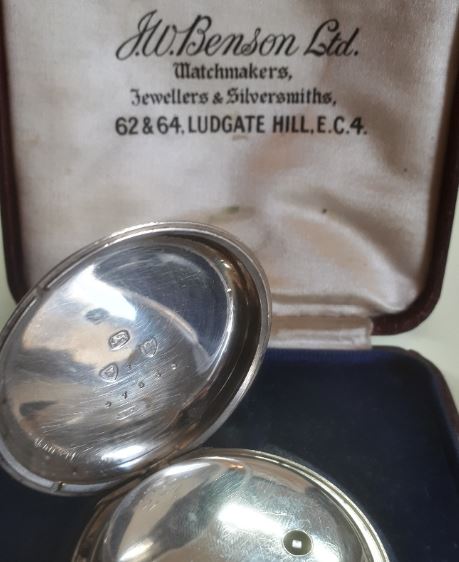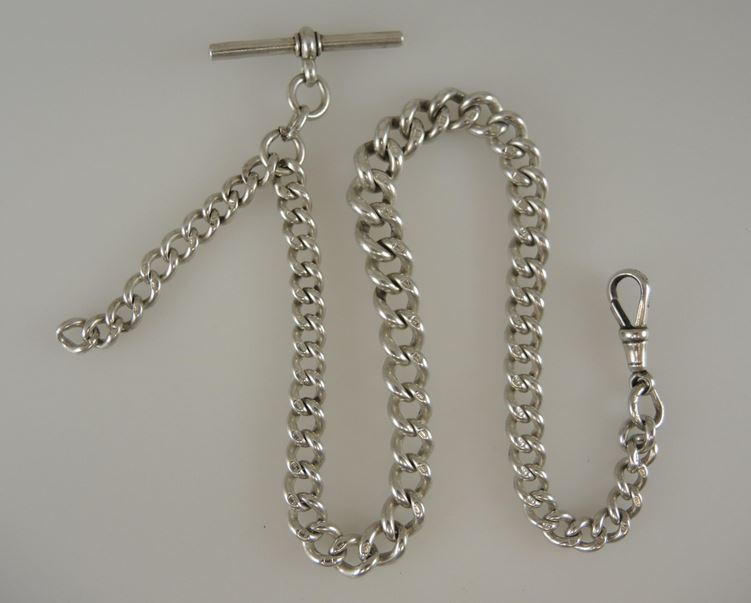Last updated on July 2, 2024
In this post, we will discuss how to care for and maintain your antique watch. Mechanical watches, especially antique watches are susceptible to interference from several environmental factors. Humidity, dust, electromagnetism, light and temperature variations can all cause damage to the movement and dial. So, when storing your antique watches, you need to take these factors into consideration. Humidity, dampness and water can all cause corrosion within the movement. Dust can combine with internal lubricants to create a coarse paste that can damage and impair the movement. Electromagnetism will play havoc with the watch’s accuracy, so storing it near electrical devices is not recommended. Strong light can cause an enamel dial to fade and should be avoided. Finally, changes in temperature will cause the components to expand and contract, a stable environment is best for storage.
Storage
Ideally, you would store your antique watch in a presentation box, with the dial up. It should then be kept in a drawer, away from light and electrical equipment. If possible, the drawer should be located away from internal heating or cooling systems to ensure the temperature is stable. There is no issue with storing multiple watches together in this way. Keep a clean polishing cloth in the drawer so that you can wipe down each watch as you place it back into storage after use. Ensure that the cloth doesn’t leave stray fibres, as these can interfere with the movement.
Cleaning the case
Wipe down the case after use with a clean polishing cloth. This should remove any dust, dirt or perspiration from the case. The cloth must be lint-free so that it doesn’t leave any stray fibres that could enter the movement. I strongly recommend against using chemical polishes on the case, unless this is done by a qualified watchmaker. Part of the charm of antique watches is the character and patina from a century or more of use. If you remove this by polishing, you may have a watch that looks brand new, but it will have lost its antique character. You would need to wait another hundred years to regain the patina.
Restoring a timepiece to a brand-new look can reduce the value of an antique watch. This is especially the case if the case is polished, the luminous paint is repainted, or any original parts are replaced. Instead, it is important to maintain a watch’s original finish, without worrying about minor dents and scratches.
If you wish to clean the dial, be very careful not to touch it with your bare hands. They can be easily bent which can cause them to interlock and stop the movement. Use a dry, soft cloth or a fine brush.
Can I wear an antique pocket watch for daily use?
Yes, but remember it won’t be as robust as a modern watch and will need to be treated with care. For example, you wouldn’t wear an antique trench watch if you were planning a strenuous activity such as tennis or golf. An antique timepiece is likely to be delicate and is not designed to be as shockproof as modern watches. Likewise, an antique watch that claims to be waterproof, such as a Borgel trench watch, should not be taken near water. After a century of use, the seals on the case are unlikely to still be watertight.
Winding
An antique watch will perform at its peak if it is fully wound. Most of my antique watches will run for a full 24 hours on a full wind of the mainspring. If you are wearing the antique watch daily it is recommended to wind the watch at the same time every day for consistency. Generally, I wind my antique watch in the morning each day before use to ensure consistent performance. When you wind the watch, wind it all the way until it doesn’t wind anymore. You cannot overwind a watch, but you can damage the movement if you force the winding mechanism.
If a watch is not being used daily, it is still good practice to wind it and let it run every two or three weeks. This will ensure that the lubricant is evenly spread throughout the movement and doesn’t congeal from being dormant for too long.
Is it possible to “overwind” an antique watch?
In short, no. There is really no such thing as an overwound watch. You should be able to wind a watch until it comes to a stop. At this point, the mainspring is unable to wind any further. However, if you use a lot of force and continue to wind it past the normal stopping point, then yes, you can do damage to the watch mechanism. If your watch is fully wound and it does not run, it’s because there is something preventing the movement from running. The problem is not the fully wound mainspring. This is usually caused by an old, congealed lubricant that is obstructing the transmission of power through the gears of the watch. A simple service and clean by a qualified watchmaker often correct the “overwound” watch.
Setting the time
When you set the hands always rotate them clockwise. If your watch is key set, make sure the key is perpendicular to the dial. If not, the hands can be accidentally bent to a position where they interlock or rub against the dial or glass causing the watch to stop. This is especially important with full hunter pocket watches as there is very little clearance between the dial and the crystal.
Servicing
Mechanical watches need regular services and oil changes to continue running accurately. The recommended service interval is between 2- 3 years. However, if the watch is stored in a clean environment and not used daily this can be extended to up to 5 years. This applies to antique watches that are being used regularly.
I spoke to a watchmaker recently, who specialises in antique pocket watches. His advice was that as long as a watch is stored correctly and wound occasionally, a service is only recommended when the watch stops completely or begins losing time. Note that antique watches with lower jewel counts are likely to need servicing more frequently.
What to avoid to preserve your antique watch
Keep away from water, if the case gets wet, wipe it immediately with a dry, soft cloth.
Avoid wearing the watch in dusty environments.
Stay clear of strong magnetic fields. You could magnetize your watch inadvertently and cause erratic behaviour. The watch may also stop entirely.
If wearing an antique pocket watch it is best to secure it with an Albert chain. This will prevent accidentally dropping and damaging the pocket watch.
Keep your antique watch away from colognes, deodorants and grooming products. These can stain the casing. Always, leave your antique watch until last when getting dressed.
Try not to wear the watch in extreme temperatures. Moving from the heat outdoors into a cool air-conditioned environment can cause undue stress on the components as they quickly expand and contract. A stable temperature is best. Also, keeping your watch in extreme heat for too long can also cause the lubricant to congeal, causing friction on the pivots.
Always carry open-face pocket watches with the dial facing inwards. This will protect the crystal from being damaged by bumps and knocks.
Never keep your pocket watch in the same pocket as other items such as keys or coins. These can scratch the case or the crystal.
Pocket watches with covers should be treated with care. Never force the cover open. Damage can occur to the hinge or spring and this could prevent the cover from closing properly.
Related content
A beginner’s guide to antique pocket watches.
A list of additional posts regarding antique watches can be found on the Guides page.



Would my pocket watch qualify as an antique one ?it was purchased in1911.it is Swiss made,Zenith brand,from Favre Leuba company it still runs though not accurately.the case is of silver and on it is marked .935 What would you say it is worth ? Thanks for your opinion
Hi Parag, your watch certainly qualifies as an antique. Zenith and Favre Leuba are both reputable Swiss brands. If your watch is not running accurately it will need a service by a reputable and experienced watchmaker. Typically, my antique watches all run within a minute’s accuracy a day. It is difficult to value, typically antique pocket watches were made in such high volumes that they are still relatively inexpensive to buy. Your best option is to search online auction sites for comparable pieces. You also need to factor in the cost of the service as this will affect the value. Thanks, Jason